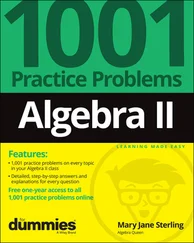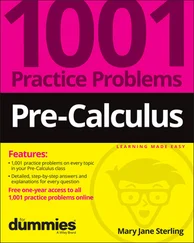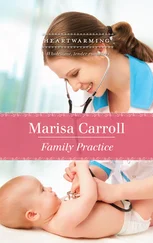At Level 1, the person has good mental, behavioral, and psychosocial health. The individual questions the seriousness, lethality, and consequences of a pandemic virus. They are generally compliant with virus hygiene protocols, although there is some minimization of the seriousness, lethality, and consequences of a pandemic virus. They are sometimes noncompliant with virus hygiene protocols such as wearing masks, washing hands, and keeping a safe social distance. They are also somewhat confused about the efficacy of taking vaccines but are more flexible with vaccine compliant compared to Level 2 persons. Individuals at Level 1 may experience and react with slight irrational fear and anxiety; however, this is directed more toward their changing environment, which they do not understand, recognize, or feel they have control over because of a pandemic disaster. Individuals at Level 1 are more affected by trigger events (e.g., media reporting of positive COVID-19 cases, COVID-related illnesses and deaths, school and workplace closures) and form their pandemic ideology based on events that may or may not directly impact their lives. Clinically significant psychological/emotional symptoms and conditions are not always dealt with in a therapeutic manner, but these individuals may consider interventions if the symptoms increase; if the symptoms become persistent stressors; and if treatment is prompted by home, school, or work environment. The individual exhibits stress-hardy behaviors on an occasional basis. They may be better able to bounce back from adversity compared to individuals with good resiliency. Individuals at Level 1 at times endorse public health principles, practices, guidelines, and government mandates but maintain their own philosophy regarding public health standards of practice. They generally view good virus hygiene as essential to protect themselves and others, but at times they justify taking more virus hygiene risks than persons in total conformity with public health practices. Individuals at Level 1 struggle slightly with balance, adaptation, and adjustment in relation to their changing pandemic environment. The individual conforms to the socially acceptable standard of grief and loss. However, it is challenging to deal with the extraordinary stressful and/or traumatic events associated with a pandemic virus because these people are internally focused on their own lives and avoid thoughts, feelings, and cognitions associated with a disaster. Persons at Level 1 do an adequate job balancing the reality of a pandemic disaster with other life responsibilities. They have the ability to move forward but are challenged more than others with their medical, physical, and mental health conditions. Persons at Level 1 may have mild academic, job, career, relational, financial, and other hardships that may be beyond their control. Their overall mental and physical well-being is mildly compromised by their ability to cope with adversity. Persons at Level 1 find some meaning in their existence but find it challenging to gain consistent relief during phases of a pandemic disaster. Adjustment and adaptation to the overall effects of a pandemic virus are slightly challenging for persons at Level 1 because they sometimes struggle with a path forward to achieve overall health and well-being. The mental, behavioral, psychosocial, and medical/physical health of the individual at Level 1 is demonstrated by the following.
Person has more resiliency skills than Level 2 persons, but only in specific life situations. They struggle within the normal range of psychological adjustment when dealing with critical life events and major life stressors (e.g., job loss, the death of a family member, divorce, personal illness, injury, disease, disability). Person takes some therapeutic responsibility for mental health symptoms and conditions that hinder at home, school, or work. Person struggles slightly with positive optimism and balancing mood, emotion, affect, and rational thinking but does much better than persons at Level 2. Person handles daily life stressors with an adequate degree of coping and resiliency skills. They transition adequately through the phases of a pandemic disaster. They have some difficulties cultivating new meaning, personal growth, hardiness, and daily self-care. Thus, guidance in this area is essential to maintain their overall health and well-being.
Person is challenged with establishing a well-balanced life but maintains a healthy routine of virus-related hygiene habits. Person has an awareness of respect for self and others concerning social distancing, stay-at-home orders, and other good virus hygiene habits but makes exceptions to their pattern of virus hygiene. Person attempts to engage in regular exercise or recreational activities but is not always successful. Nutritional intake is inconsistent with most dietary standards. Person, however, has a good awareness of the value of nutrition. They demonstrate inconsistent patterns of sleep and rest, have inconsistent patterns of virus hygiene, and are challenged somewhat to maintain overall daily functioning. They are perceived by themselves and others to be somewhat focused, motivated, and goal oriented but have room for improvement. They are observed by others as taking personal responsibility for living in positive optimism but are challenged more than other individuals. Person demonstrates adequate interpersonal communication skills to get by in life but is challenged by sustaining them at a consistent level. Relationships are often mildly strained because of interpersonal communication skills. Person is viewed by others as action oriented or a contributor, but only on their terms and conditions. They have the ability to maintain a balance of medical, physical, mental health, and behavioral health.
Person has mild problems in a wide range of life areas, such as academics, job, career, and economic stability. Person exhibits good social and familial connections. Person is slightly challenged with self-motivation and engages occasionally in organized activities such as clubs, organizations, religious/spiritual life, and recreational activities. Person has mild challenges balancing home, work, academics, and social life. Person exhibits good adaptation and adjustment to a pandemic disaster but on an inconsistent basis. This is dependent on their ability to maintain their personal medical, physical, psychological, behavioral, financial, and occupational health. Person has good skills in independent living, environmental functioning, and daily functioning.
Person has mild medical, physical, and mental health conditions but, with regular discipline, they can maintain good health and well-being. Person requires prompts to take personal responsibility for their medical, physical, behavioral, mental, and psychosocial health. They use some support systems, resources, and technology to live life in optimal wellness.
The primary supposition of the PRRC theoretical model is that individuals exhibit a range of mental, behavioral, and psychosocial adaptations during the phases of a pandemic disaster. These characteristics range on a continuum from excellent to poor resiliency and from low to extreme risk. Thus, appraising, identifying, and recognizing maladaptive and unhealthy mental, behavioral, and psychosocial reactions is critical to protecting the mental health and well-being of coronavirus patients and clients. Overall, the long-term mental health implications of the COVID-19 pandemic for individuals, groups, communities, and cultures are worrisome. For mental, behavioral, and psychosocial health prevention and treatment of pandemic disasters to advance in theory and practice, models of identification, prevention, preparation, and mental health practice are essential. The theoretical model proposed here has both practice and research applications in the psychology, counseling, disaster mental health, and allied helping professions.
Читать дальше












